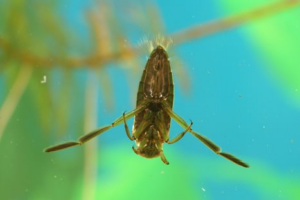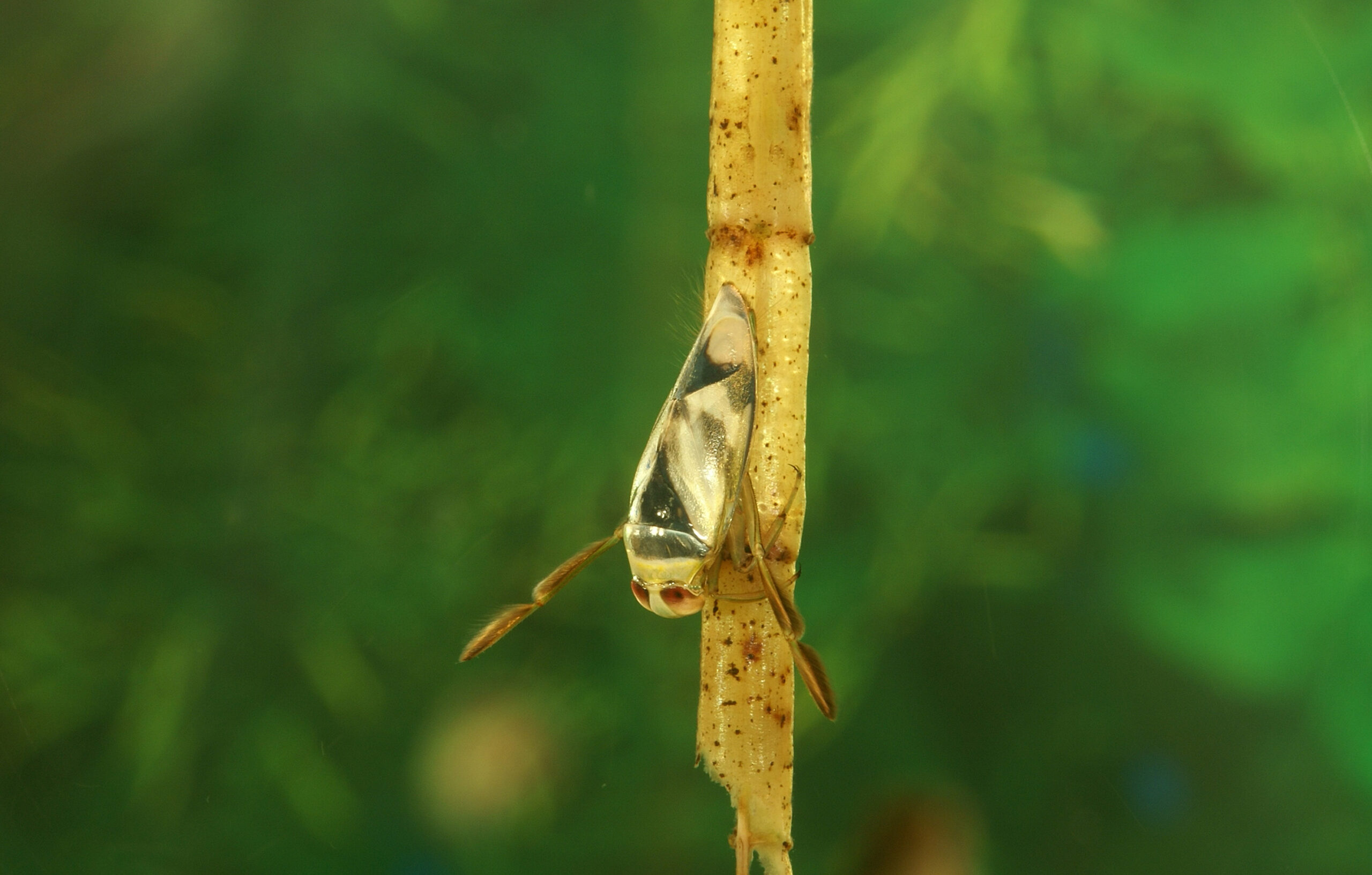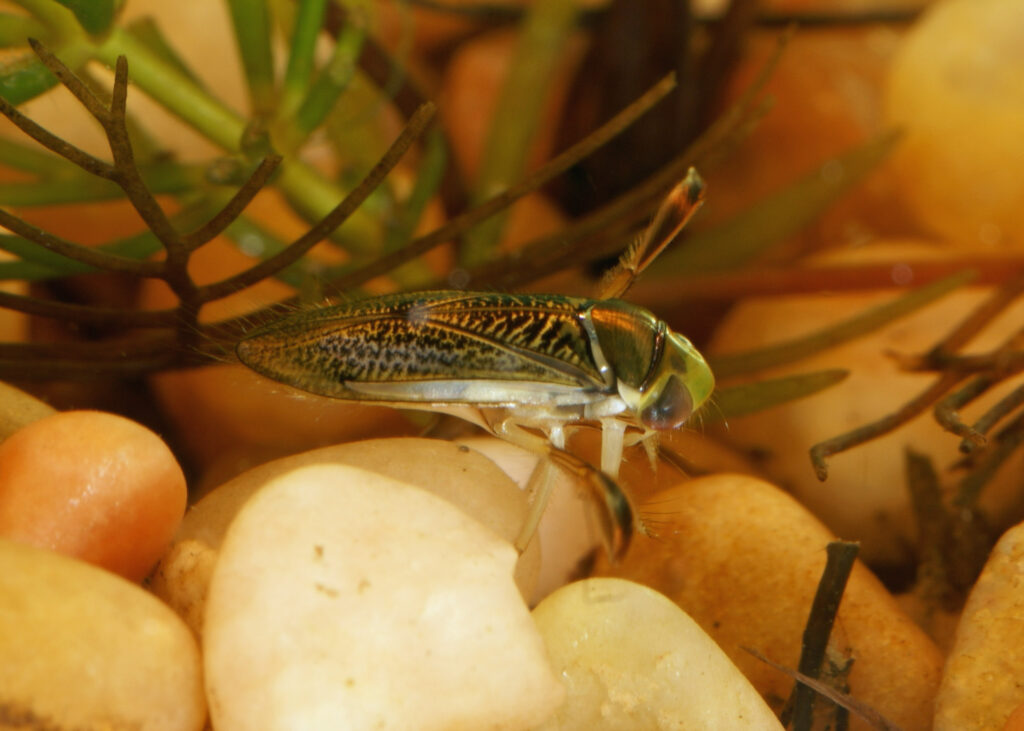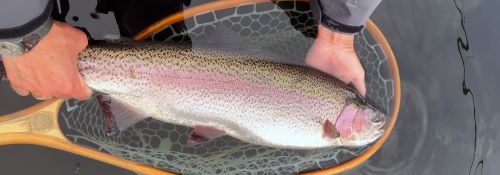Water boatmen and backswimmers are a lesser-known but still-important food source for trout and char in lakes. Both insects are easily identified by their beetle-like shape, and elongated pairs of hind legs that are feathered and resemble an oar. These legs are what propel them through the water.
Waterboatman and Backswimmer Behaviour and Life Cycle
When underwater, boatmen and backswimmers are found hiding amongst the vegetation growing up off the bottom of the shoal or shallow-water zones of a lake. Air-breathing insects of the order Hemiptera, they have to come up to the lake’s surface to trap a bubble of air. This air bubble allows them to swim down and back up through the water column.


Boatmen and backswimmers are excellent fliers, which is part of the reason why they are of interest to trout and char. These insects undergo mating and swarming flights during the early spring and mid- to late fall. Classic boatmen/backswimmer flights occur on calm, sunny days. Thousands of the insects literally fly into the surface film, like raindrops falling from the blue sky, and then attempt to swim to the lake bottom to lay eggs.
Trout soon locate these dive bombers, many of which are momentarily stunned and struggling in the surface film. Slashing and boiling riseforms signal the attack on those insects, while more are picked off as they swim down to or up from the lake bottom. Before one knows it, the insect flight and fall are over; the water’s surface becomes quiet again, without any sign of an insect emergence having occurred.
Common colouration of water boatmen adults is a dark brown to black shellback (wing case), with an olive green to lemon yellow underside or abdomen. The plastron, or air bubble, is then overlaid on the surface of the abdomen. Boatmen bodies reach about five millimetres in length. Their cousins, the backswimmers, often have a mottled dark brown and tan shellback or wing case, and an abdomen that usually displays a mottled pattern of several colours including yellow, tan, and olive. Backswimmers are much larger, reaching almost 10 millimetres in length. As their name implies, they do swim upside down.


Fly-Fishing Tips for Boatmen and Backswimmers
Trout and char can feed on boatmen and backswimmers in very shallow water as well as in the deepest parts of the lake. Therefore, use a variety of sinking fly lines to present flies imitating the real bugs. With sinking lines, the number designation indicates the approximate rate at which a line sinks in inches per second (for example, a Type 6 line would sink at about six inches per second). Intermediate (Type 1) or slow-sinking lines (Type 2 or 3) are best for covering shallow water zones that are less than a depth of about three metres (10 feet). Deeper zones of the lake can be very effectively covered with faster, full-sinking lines (like Type 5, 6, or 7).
Allow the fly line and fly to sink to just off the bottom. Then impart a quick, continuous, five- to seven-centimetre (two- to three-inch) strip retrieve. In deeper water, it’s best to make as long a cast as possible, and wait a little longer for the fly line and fly to sink to the bottom. The idea is to retrieve the boatman or backswimmer pattern up through the entire water column.
Waterboatmen and Backswimmer Fly Patterns
Boatmen and backswimmers are fairly easy to imitate at the tying bench. Key features to consider are the general oval body shape, the long pair of hind legs, and the plastron of trapped air enveloping the underside of the abdomen. Sparkle Chenille, Flashabou, silver Mylars, and iridescent synthetic dubbings are just a few of the materials one can use to help give the illusion of the air bubble. Beadhead Prince Nymphs and Zug Bugs will often fool fish during the early stages of a fall or dispersion flight, but trout tend to get more selective after having eaten a few of the real insects. It’s always a good idea to check out a local fly shop for commercially tied imitations developed for the area’s waters.
Author: Brian Chan, Freshwater Fisheries Society of BC Fishing Ambassador.
